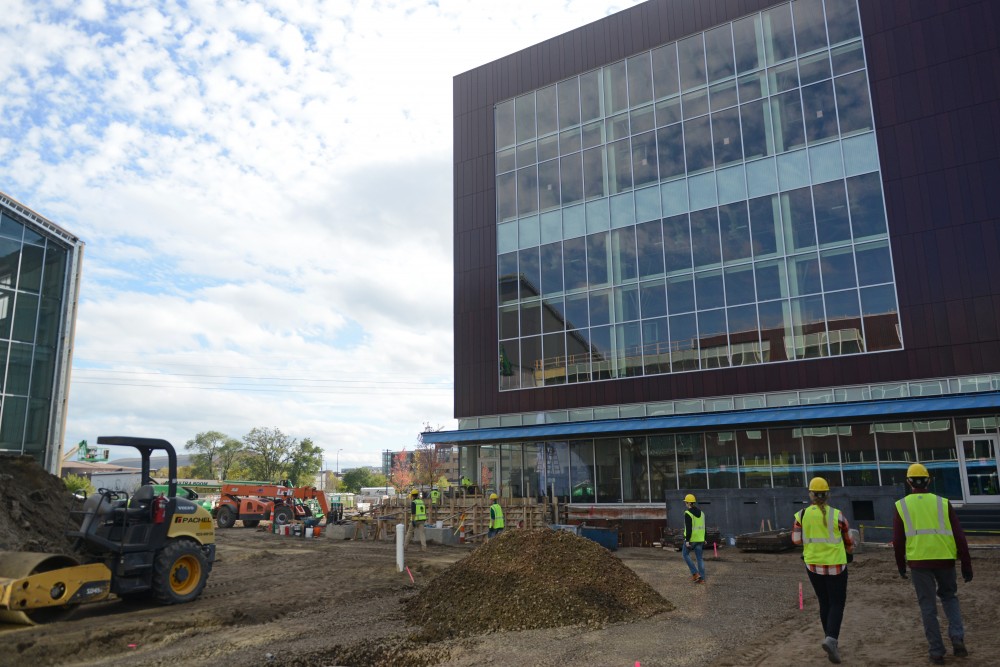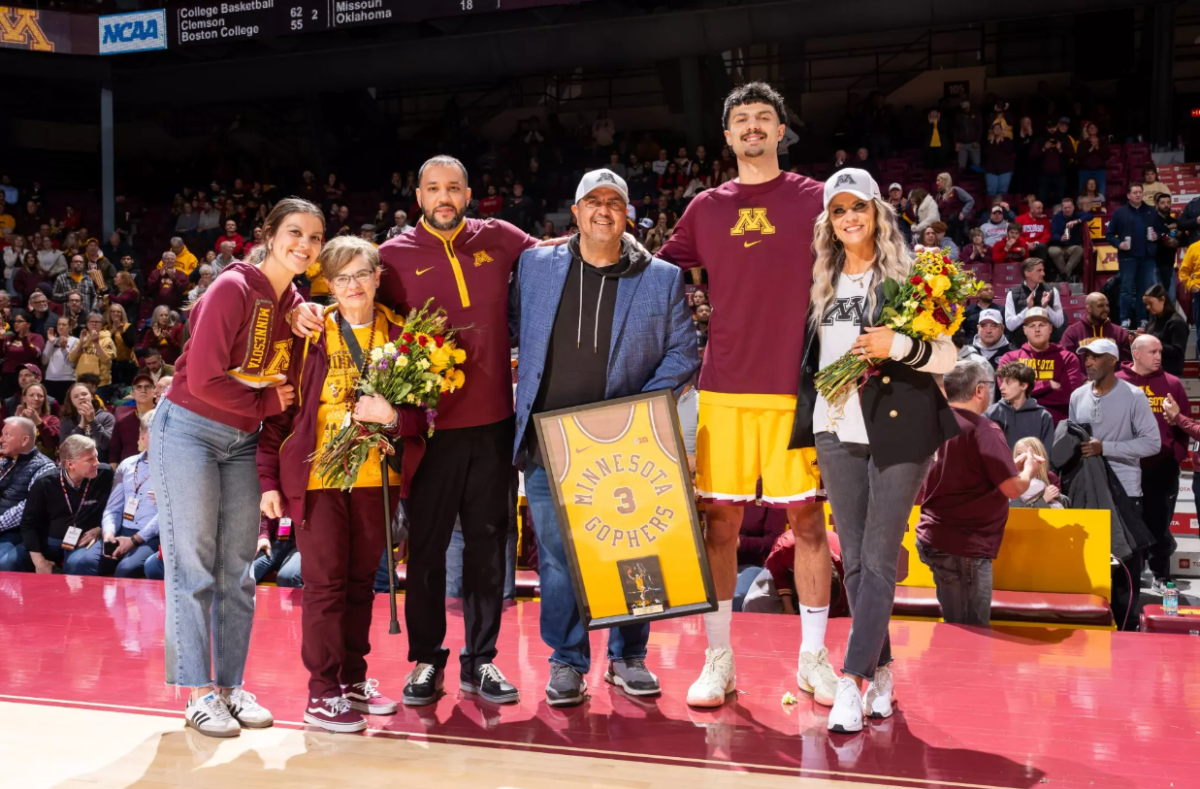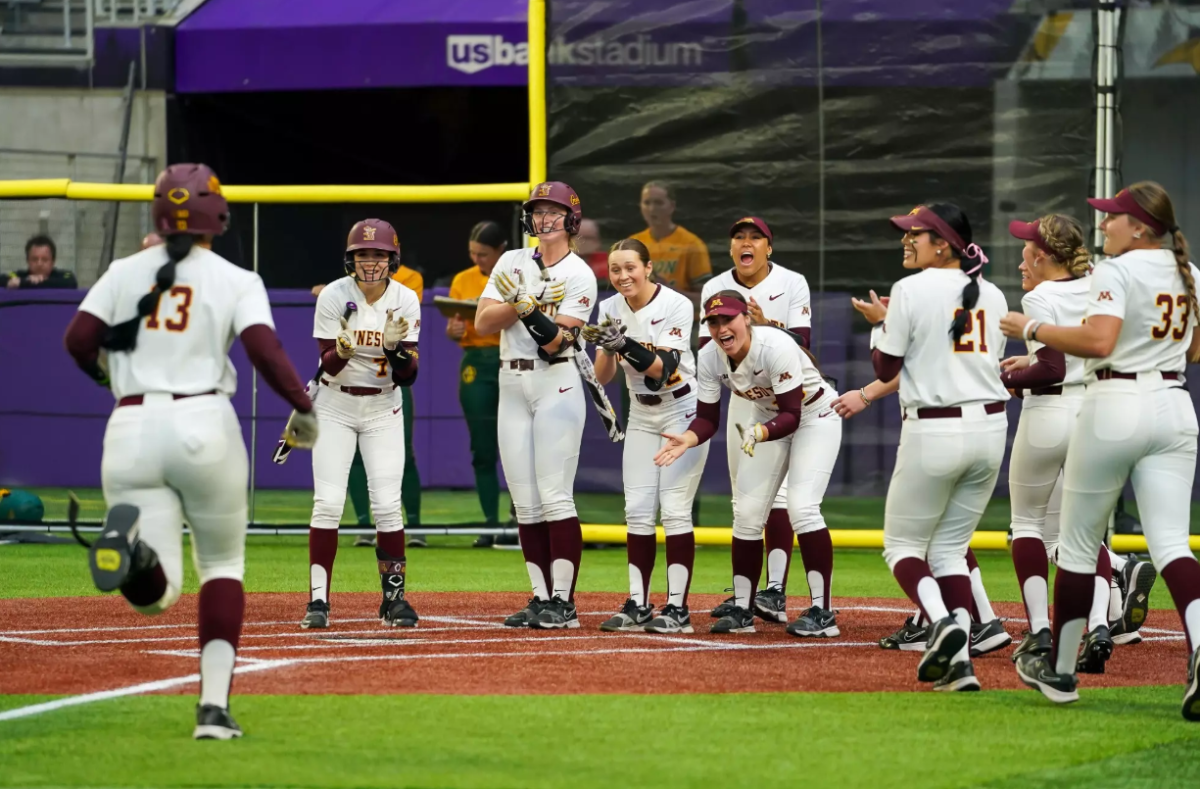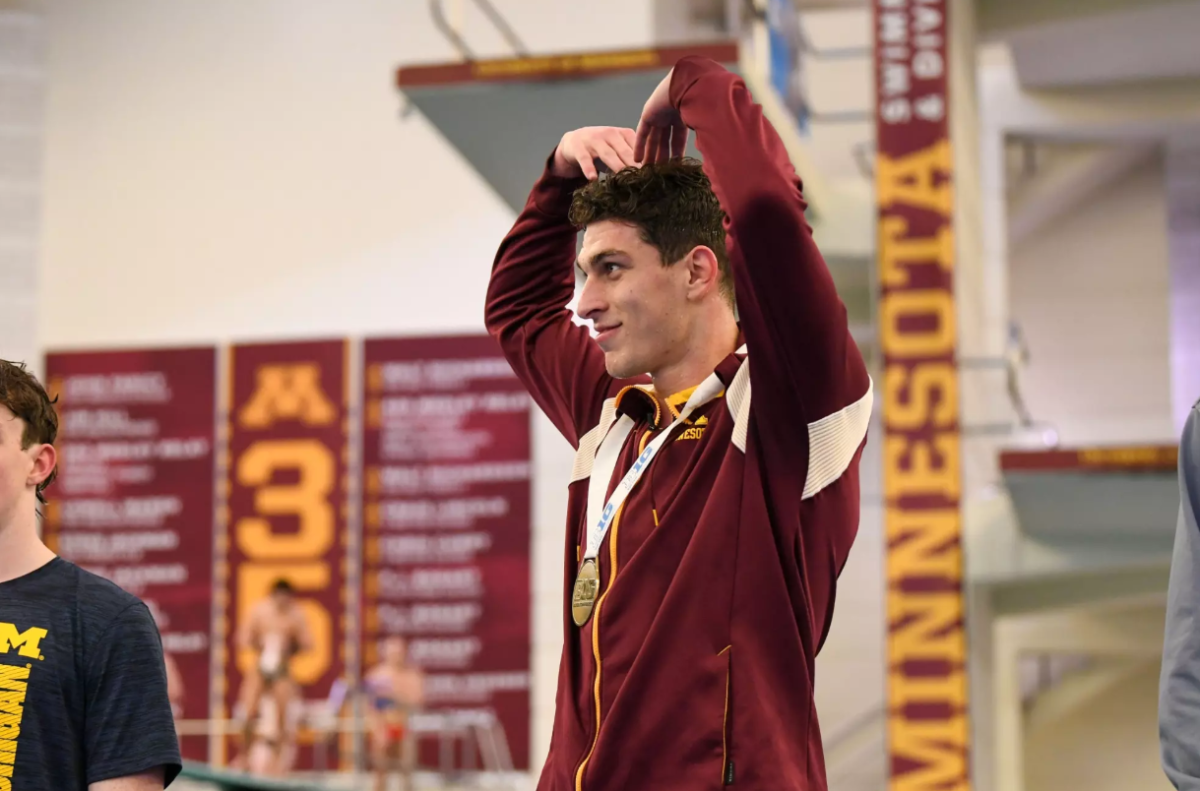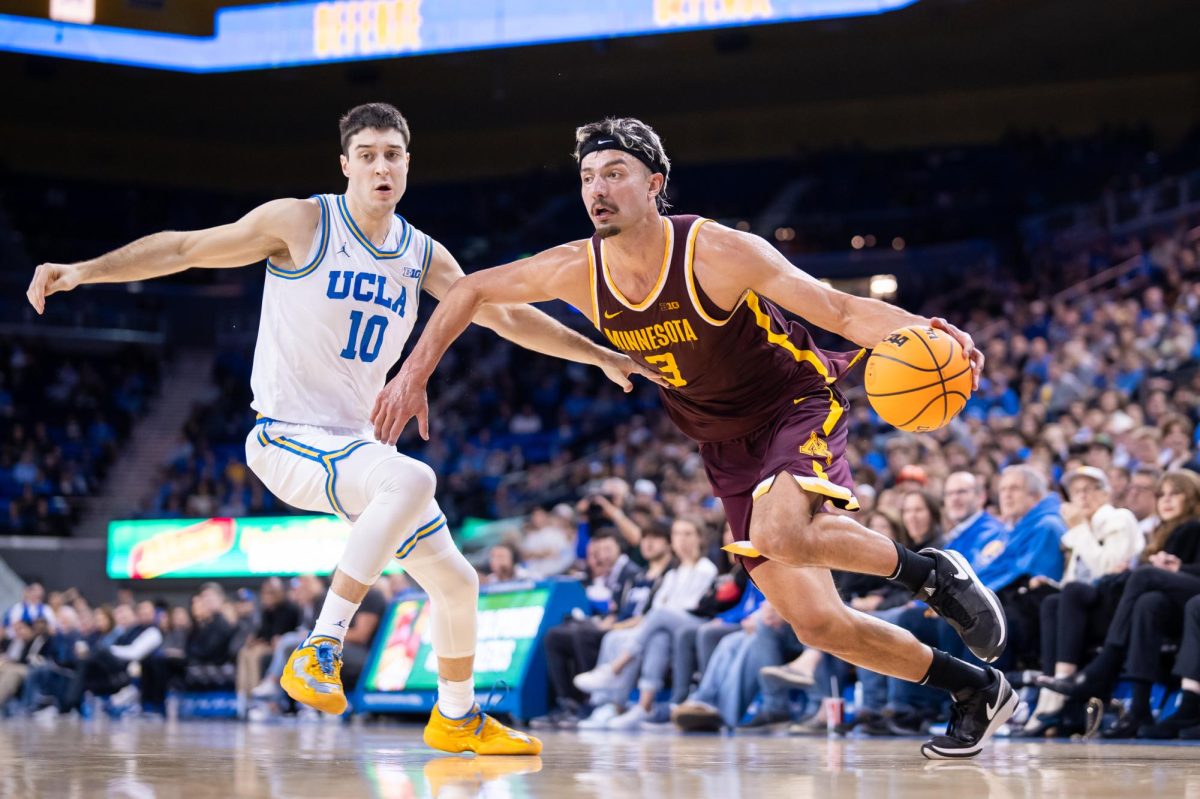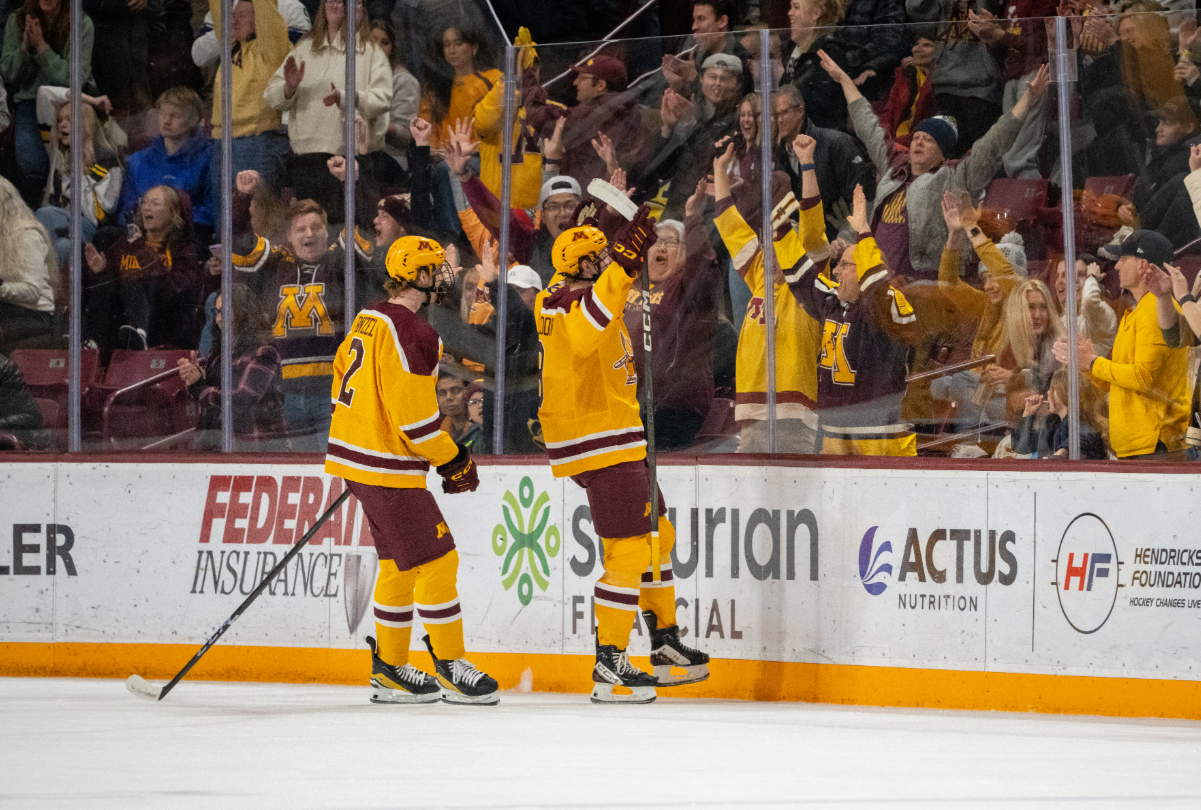With a projected $166 million bill, the University of Minnesota’s Athletes Village will be funded in part by the largest fundraising campaign its athletics department has ever undertaken.
The department has raised $105 million to date, with $16 million raised in the past month alone. The remaining $61 million will be financed through debt, a practice the University uses on certain high-dollar capital projects.
The $104.5 million renovation of Pioneer Hall, for example, uses similar financing but does not utilize donations.
Athletes Village, the complex in Dinkytown that will house Gophers football, men’s and women’s basketball and administrative offices for athletics staff, is currently the largest single project underway at the University, though other projects have been larger in dollar value, like TCF Bank Stadium.
Taking on debt
Brian Burnett, the University’s vice president for finance and operations, said costs for the project that do not come from donations will be financed by taking on debt.
“It’s not that different from taking out a mortgage on a house or a loan for a car,” Burnett said. “You don’t just have all of that money saved up.”

To finance high-dollar projects like Athletes Village, the University takes on a combination of short-term and long-term debt, Burnett said.
Individuals or companies can issue the University short-term loans for 30 to 180 days that the school pays back with less than 1 percent interest.
Burnett said short-term loans are safe for investors and cheaper for the University to refinance.
“The idea is to pay as little interest as possible,” Burnett said. “Interest is just money out the door.”
The University also takes on longer-term debt that it will pay off over the next 25 years. Burnett said the school brings funding requests to banks and negotiates with the banks to get the lowest interest rates possible.
“We tried to issue as little long-term debt as possible because it’s a little more expensive,” Burnett said.
Burnett said the school’s credit is rated highly, and as a result, the school can borrow money at low interest rates which are already at historic lows.
Companies like Land O’ Lakes, 3M and TCF Bank — among others — invest in these long-term bonds because they often recruit students from the University, Burnett said.
“Corporations recognize how well we do athletically, but more importantly how well we do academically,” said Athletics Director Mark Coyle.
The Athletics Department will spend roughly $3.6 million a year paying back the loans, using money from ticket sales, television and further donations, Burnett said.

Donations
Through fundraising efforts, the Athletics Department has received a combination of money upfront and commitments for donations over time.
For instance, the department knows how much donation money is pledged to be gifted in 2019, 2020 and in the following years.
This year, the University also publicly announced a $4 billion fundraising effort nicknamed Driven, part of which will go towards Athletes Village and the Athletics Department in general.
Paying it off
The University will not have a finalized cost for Athletes Village until after the project is completed, due to unforeseen changes that could occur, Burnett said.
Each month the school pays the project’s contractor, Mortenson, through University general funds. The department is obligated to reimburse the general fund once the project is complete, Burnett said.
“We pay the contractors and workers until their job is done,” he said. “Then we’re left with these bills and it’s about figuring out how to pay those bills back over time.”
Project costs they also include are building design, workers’ pay and University project managers who oversee the project.
“You’re talking about millions of dollars at stake,” he said. “You need to get it right.”
Endgame
Administrators said the new facility will not only improve the student experience for current athletes, but attract potential athletes and coach recruits as well.
“It’s a game changer for us,” Burnett said.
The indoor football facility can also be used by other athletic programs looking for indoor places to practice.
Additionally, athletic programs moving into the new facilities will vacate their current spaces, allowing other teams to move into their places.
“It’s going to have a huge impact on all 25 programs,” Coyle said.
Burnett said he expects athletes to begin occupying Athletes Village by the winter semester break.
Correction: A previous version of this article misstated how much the University hopes to raise with its “Driven” campaign. The fundraising goal is $4 billion.


